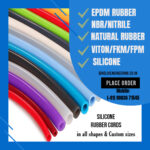CNC (Computer Numerical Control) machining is widely used in the manufacturing of aluminium products due to its precision, versatility, and efficiency. When it comes to CNC aluminum product manufacturing, here are some common steps involved:
- Design and Engineering: The process begins with designing the aluminum product using computer-aided design (CAD) software. This involves creating a 3D model or blueprint that specifies the dimensions, features, and tolerances of the desired product.
- Material Selection: Choose the appropriate grade and type of aluminum for your specific application. Aluminum alloys offer different properties such as strength, corrosion resistance, and machinability. Common aluminum alloys used in CNC machining include 6061, 7075, and 2024.
- Material Preparation: The selected aluminum material is prepared for CNC machining. This typically involves cutting the aluminum stock into suitable sizes, such as sheets, bars, or billets, depending on the product design and manufacturing requirements.
- CNC Machining: CNC machines, controlled by computer programs, are used to precisely shape and finish the aluminum material according to the design specifications. This involves a range of machining operations, including milling, turning, drilling, and threading. The CNC machine removes excess material to create the desired shape and features.
- Finishing Operations: After the initial CNC machining, additional finishing operations may be performed to refine the surface finish, remove sharp edges, and add any required surface treatments or coatings. This can include processes such as sanding, polishing, anodizing, powder coating, or painting, depending on the desired appearance and functional requirements of the product.
- Quality Control: Throughout the manufacturing process, quality control measures are implemented to ensure that the CNC-machined aluminum products meet the required specifications. This can involve dimensional inspections, surface quality checks, and other tests to verify the accuracy, strength, and overall quality of the finished parts.
- Assembly and Packaging: If the aluminum product requires assembly with other components, this step involves integrating the CNC-machined parts into the final assembly. The finished products are then carefully packaged and prepared for shipment or delivery.
It’s worth noting that the specific manufacturing process may vary depending on the complexity of the aluminum product, the quantity required, and the capabilities of the CNC machining facility. Working with an experienced and reputable CNC machining supplier is crucial to ensure the successful production of high-quality aluminum products.






